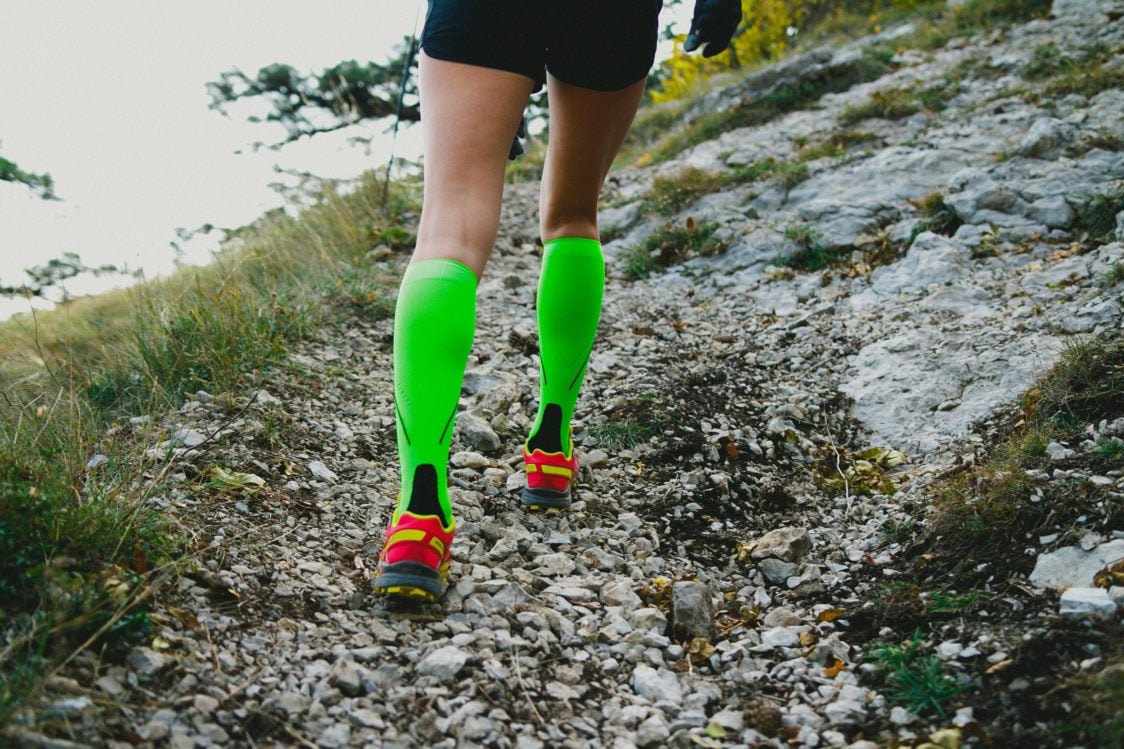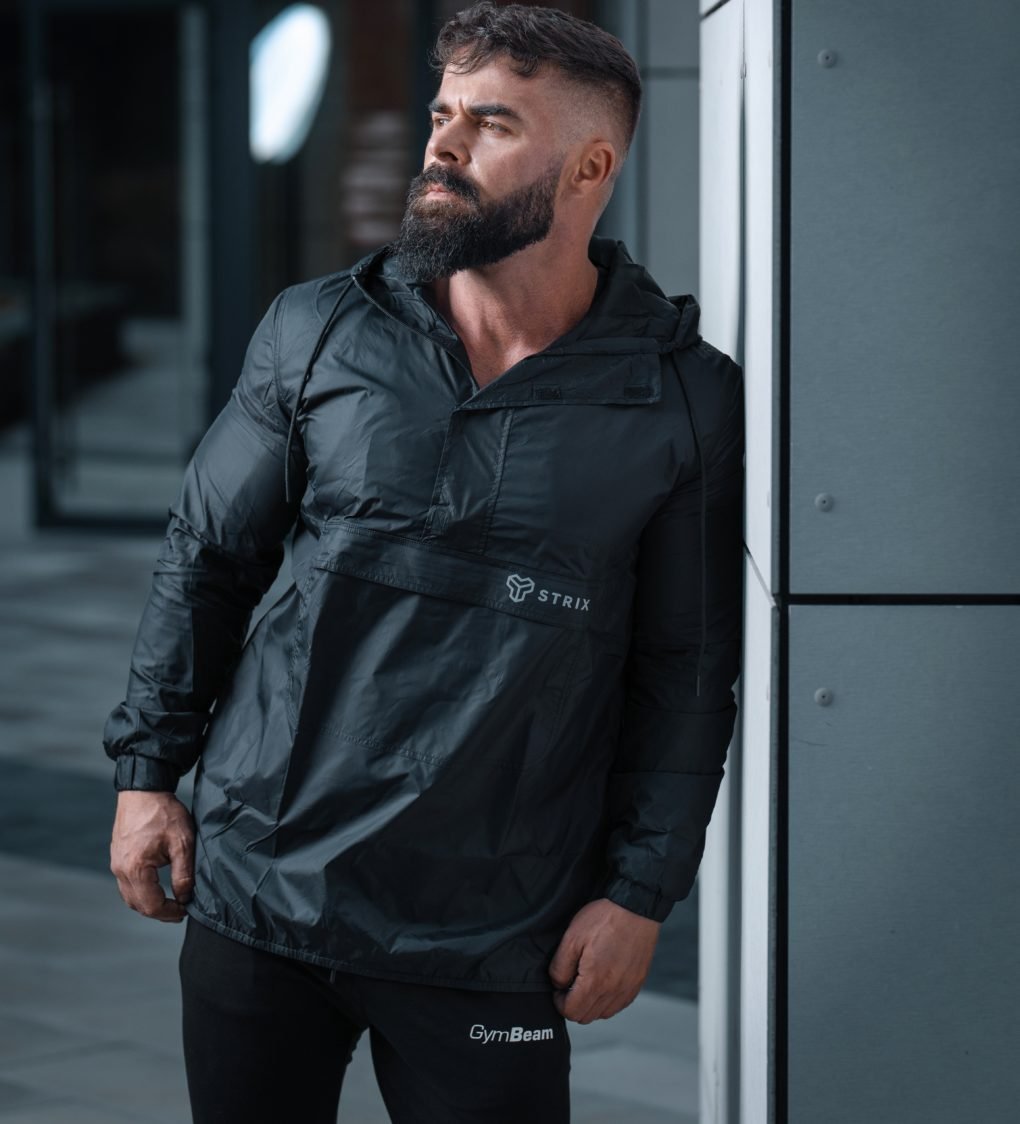Table of Contents
Everybody who does any kind of sports regularly will agree that functional clothing should be an integral part of every athlete’s closet. Not having proper attire could easily ruin your experience when, for example, running. After a few kilometres, regular clothing stops ventilating the absorbed sweat, and you can end up being cold. This could mean that you’d have to cut your training short, run back home and still possibly catch a nasty cold. There’s a large difference between the practical properties of a t-shirt made from simple cotton and a merino wool. In today’s article, we’ll have a look at what functional clothing actually is, what it’s for, and how to pick the right type of sportswear for your activities.
What is functional clothing?
The category of functional clothing generally encompasses clothes designed to meet user performance demands in difficult conditions. This usually involves having specific dimensions and cuts that are tailored to the user’s body composition. A common feature is including smart elements, such as mesh fabric, designed to add to the comfort of the user. Mesh fabric, for example, is often placed in the areas where heavier perspiration is expected, such as around armpits, in order to improve breathability of the clothing item. [1–2]
The manufacturing of functional clothing takes into consideration the physiology of the human body, and tries to work around it, so that the final product properly reacts to the demands the body has during physical activity. Practically speaking, in comparison to regular clothes, functional clothing is something of an upgrade on performance properties, which comes useful either when doing sports, or hard physical labour. [1–2]
What are the functions of functional clothing?
Functions | What can it do |
|---|---|
| Protection | Protects from extremely high or low temperatures, rain, snow, wind, UV light, fire, skin contact with dangerous substance, radioactivity, etc. |
| Health functions | Creates pressure for better blood circulation in cases of blood vessel and lymphatic system problems, monitors physiological parameters such as heart rate, blood oxygenation or body temperature |
| Athletic function | Improves performance, lowers fatigue |
| Aesthetic function | Body shaping for better looks and less resistance |
| Complex function | Multifunctional performance, protection, support, comfort |
| Special needs support | For infants, people with disabilities, elderly |
How can functional clothes help an athlete?
As we can see in the chart above, functional clothing isn’t made solely for athletes. Our focus, however, is going to be specifically on how it can help us improve your athletic performance, post-workout regeneration and overall comfort while doing sports.
1. Sweat absorption
Moisture absorption is one of the most important functions clothing can have for an athlete. If you’ve ever done any training wearing a shirt that cannot do this properly, you would have noticed that a soaked t-shirt is uncomfortably heavy, and even makes you cold, depending on weather conditions. Synthetic materials such as polyester or polyamide excel at absorbing and evaporating sweat. Merino wool is particularly efficient at this function, which, however, often also reflects on the price tag. To maximize the capacity of handling sweat, many designs also use special technologies.

2. Breathability
Better breathability makes clothing feel more airy. Clothes that have bad breathability feel like you’re wearing a plastic bag. Breathability is sometimes also denoted using a more specific term, “water vapour permeability“. This attribute helps channel humidity away from the body, and prevents it from overheating. Breathability is often improved by using mesh elements and ventilation cutouts.
To find out exactly how breathable your clothing is, you can look up its RET value (Thermal Evaporative Resistance). If the RET value is lower than 6, the clothing item in question is very breathable. If RET is over 20, it’s not sufficiently breathable at all. When picking your clothing, keep in mind that certain materials, such as some soft shell fabrics on the market can be both breathable and waterproof, which is especially useful for hikers, who often have to contend with less than ideal weather conditions. [3–4]
3. Maintaining body temperature
Aside from the material used, another factor in an item’s ability to maintain body temperature lies with its cut, more specifically, the amount of air it keeps in between the fabric and the body. A brilliant choice in this regard is, for example, a fleece jacket, which keeps the warmth, while channelling the sweat away. It’s important to pick clothes that fit your body right. If your jacket is one size too big, it’s going to let too much air flow in and out, making it less effective at its job. [5]

4. Cooling
Cooling is particularly important on hot summer days. On days like that, you might sweat even when doing absolutely nothing, and some good workout can only add to the issue. It’s therefore sensible to do all you can to try and lower the perceived body temperature at least a little bit. [6]
When picking clothes that can help you stay cool, it’s also important to mind that you want to stay dry. A good functional material should not only help you avoid overheating, it should also deal with sweat properly. For this purpose, you should pick synthetic materials that are additionally equipped with cooling technologies. Such technologies are capable of lowering your body temperature by 1 or even 2 degrees during the physical performance. When doing sports in hot weather, this makes a significant difference. [6]
You might be interested in these products:
5. Better blood circulation to improve regeneration and performance
Blood circulation can be improved by using compression clothing. Compression clothes fit tightly around the body and improve blood circulation, increasing the amount of oxygen that enters to the active muscles. This can improve performance, increase regeneration rate, help you avoid swellings, alleviate pain and the strain your activity puts on tendons, joints and ligaments. This is why runners, for example, often choose to wear compression knee socks, which can boost the performance. If you choose to give compression clothing a try, keep in mind there are different levels of compression. [7–9]
Compression levels:
- mild compression: 8 to 15 mmHg
- medium compression: 15 to 20 mmHg
- firm compression: 20 to 30 mmHg
- extra firm compression: 30 to 40 mmHg
- medical prescription only: 40 to 50 mmHg
If you have no experience using compression clothing such as compression socks, and would like to give these a try, it is recommended that you pick socks with a compression level between 15 and 30 mmHg. Aside from socks, however, it’s worth looking for compression leggings or shirts, which provide similar benefits.

6. Protection from bad weather conditions
Weather protection is particularly important for athletes who practice outdoor sports. The sheltered environment of the gym is very unlikely to surprise you with a sudden rain or snowstorm, a blizzard or strong winds. A mountain trek, however, can easily surprise you with all of these within a span of few hours. Keep that in mind, especially when selecting outer layers, such as jackets.
Measuring the level of waterproofing in functional clothing
If you’re looking for a jacket that will protect you from rain, you’ll need to pay attention to the so-called water column statistic, the values of which are generally listed in millimetres. [10–11]

The higher the water column value, the more waterproof the jacket.
- very mild rain: 0–1 500 mm
- mild to average rain: 1 500–5 000 mm
- mild to heavy rain: 5000 mm
- heavy/dense rain: 10 000 mm
- difficult mountain weather conditions – heavy rainfall and snow: 10 000–15 000 mm
- skiing jacket: 15 000–20 000 mm
Some less common jacket types can boast up to 40 000 mm in water column values. This isn’t necessarily the best choice, however, as high water resistance is often achieved at the cost of low breathability of the material, which can drastically lower the comfortability of the clothing item.
Measuring sunlight resistance
Another value that might be relevant when choosing functional clothing is its resistance to sunlight, particularly the resistance to the ultraviolet part of its spectrum. This is measured using the UPF (Ultraviolet Protection Factor), which determines the percentage of sun rays that penetrate the clothing and reach your skin.
If a shirt boasts, say, a UPF of 50, it means the fabric filters away up to 98 % of sun rays. Any satisfactory protection against sun should provide a UPF of at least 30 and higher.
When shopping for a protective outer layer of clothing, try picking something that effectively breaks wind, boasts a solid but not extremely high water column value and is also capable of protecting you from direct sunlight in the mountains.
7. Better aerodynamics
Aerodynamic clothing is a must for high-performance race athletes, for whom every second counts. It can, however, add to the enjoyment of the sport even outside the competitive context. Struggling with wind resistance is a common topic among all cyclists, and if you’ve ever tried biking against wind in a large floppy jacket, you’ll understand why. A piece of clothing that creates a sail effect on the bike can really take away from the joy of riding. Many studies show that even a small decrease to wind resistance using aerodynamic clothing can significantly improve performance in speed-centred sports, such as running, skating or cycling. Decreasing wind resistance is also important for ski jumpers or swimmers, who want to achieve the best time results possible. [12]
To achieve the bests results possible, go for clothes that adapt to your body perfectly, allowing the air to slide around your body. [13]
8. Reducing the risk of abrasions and blisters
Abrasions from seams together with blisters can make any training quite unpleasant. This is a common issue for athletes doing speed-based sports, in which friction between clothing and skin can be quite high. This is also important for strength based performances can bring similar problems. Even just a simple weekend stroll in nature can turn into an unpleasant experience on accounts of abrasions and blisters.
To lower the risk of abrasions, try picking sports clothes that are made using seamless designs. Functional clothing from the STRIX brand offers a wide variety of seamless sportswear. And aside from seamless undergarments, leggings and t-shirts, always pick socks that are made from materials that minimalize friction. Such socks should be double-layered. Keep in mind to choose the right size, so that the socks don’t curl up while walking or running, creating areas of high friction and forming blisters. If you find that even this doesn’t resolve your problems, try applying Vaseline to the places where you usually form blisters. After some trial and error, you are sure to find out what works the best for you.
9. Boosting your self-confidence
If you’ve put on some weight, you might find yourself disagreeing on this point. Who’d feel comfortable wearing a tight shirt that hardly lets you breathe? In such case, this type of clothing might not be the most comfortable, much less confidence-boosting.
What we mean to talk about here are clothing items such as leggings or shorts with the so-called “push-up effect”, designed to optically round out your butt. Ladies, if you happen to be a newcomer to the gym, such pair of leggings can serve as a temporary solution to boost your confidence before you actually attain the curved figure of your dreams by doing a ton of squats.

How to maximize the functionality of your clothes? Proper layering.
Looking for a versatile piece of clothing that will simply do everything at the same time? Unfortunately, that would be a futile effort. No single item will do the trick. You can, however, create the perfect versatile outfit, if you know how to layer clothes properly.
- In warm weather, it’s really quite simple. All you need is seamless underwear and a single sweat-absorbing layer. You won’t go wrong by picking a shirt made from a synthetic material or merino wool.
- In colder weather, you’ll need to add an outer layer. You can use, for example, a soft shell jacket that is resistant to unfavourable weather conditions, while maintaining solid breathability, so that you don’t end up overheating.
- In winter, make sure you add an isolation layer in between your base and outer layers. This can be, for example, a functional fleece hoodie, which fits closely to the body and maintains the warmth.
Three layers should be completely sufficient for most regular winter activities. If you pick the optimum materials, and do your layering just right, you can stay warm and dry for hours, even when performing intense sports activities.
Maintenance of functional clothing
Purchasing functional clothes made from high quality materials is step number one. You’ve got it, and you know how to use it. Now it’s time to make sure you know how to maintain it. Without proper care, functional clothing can easily lose its special properties.
Make sure you stick to some basic principles:
- Make sure you wash it in accordance with manufacturer’s instructions.
- Wash it by hand preferably, unless indicated otherwise.
- Only use drying machine if explicitly allowed by the manufacturer.
- Do not iron synthetic materials.
- Use specialized detergent gels for specific materials.
If you take good care of your functional clothing, you can be sure that it will, in turn, take care of you, in many years to come.
Take home message
Every athlete naturally wants to achieve the best results possible. Any tool that can help to do this is always welcome. Using functional clothing is a great way to boost your performance and derive more joy from the sport you love. Nobody likes working out in wet clothing that’s heavy and cold, or going for a hike in a jacket that’s going to soak up after a minute of rainfall. Always think of your best comfort and choose cuts and materials that will provide it. You can be sure this will reflect positively on your performance.
Do you have any friends who still believe nothing beats a simple cotton t-shirt for the gym? Share this article with them and help them discover the magic of functional materials.
[1] D. Gupta et al. – Functional clothing-Definition and classification – ResearchGate – https://www.researchgate.net/publication/296845630_Functional_clothing-Definition_and_classification
[2] J. McCann and D. Bryson – Smart Clothes and Wearable Technology – https://www.sciencedirect.com/book/9781845693572/smart-clothes-and-wearable-technology
[3] Aima Sameen Anjum et al. – Effect of Process Parameters on Hand Values of PU Laminated Waterproof Breathable Textile – https://link.springer.com/content/pdf/10.1007/s12221-021-0747-x.pdf
[4] Faming Wang – Measurements of Clothing Evaporative Resistance Using a Sweating Thermal Manikin: An overview – https://www.researchgate.net/publication/317040679_Measurements_of_Clothing_Evaporative_Resistance_Using_a_Sweating_Thermal_Manikin_An_overview
[5] S.P. Ashdown – Sizing in Clothing – https://www.sciencedirect.com/book/9781845690342/sizing-in-clothing
[6] High Performance Clothing – When Fashion Gets Functional – https://www.intertek.com.hk/blog/high-performance-clothing/
[7] Peter Düking, Dennis-Peter Born, and Billy Sperlich – The SpeedCourt: Reliability, Usefulness, and Validity of a New Method to Determine Change-of-Direction Speed – https://journals.humankinetics.com/search?f_0=author&q_0=Dennis-Peter+Born
[8] Florian Azad Engel et al. – Is There Evidence that Runners can Benefit from Wearing Compression Clothing? – https://link.springer.com/article/10.1007/s40279-016-0546-5
[9] Which Compression Level is Best for Your Body? – https://www.cepcompression.com/blogs/news/understanding-compression-levels-cep-compression
[10] Waterproof Jacket Guide – https://www.mountainwarehouse.com/expert-advice/waterproof-jacket-guide/
[11] Vodní sloupec – jak vybírat u funkčního oblečení – https://www.rogelli.cz/vodni-sloupec/?gclid=Cj0KCQiAkZKNBhDiARIsAPsk0WgFOimxWP36-MgC5kpZ4US3qcw4wVsvP723pWVsy_TxIShaGf-5pAAaApNgEALw_wcB
[12] Kyle CR, Caiozzo VJ – The effect of athletic clothing aerodynamics upon running speed. – https://europepmc.org/article/med/3773666/reload=0
[13] Aerodynamic Cycling: The Ultimate Guide to All Things Aero – https://www.bicycling.com/skills-tips/a22107504/aerodynamic-definition-in-cycling/


Add a comment